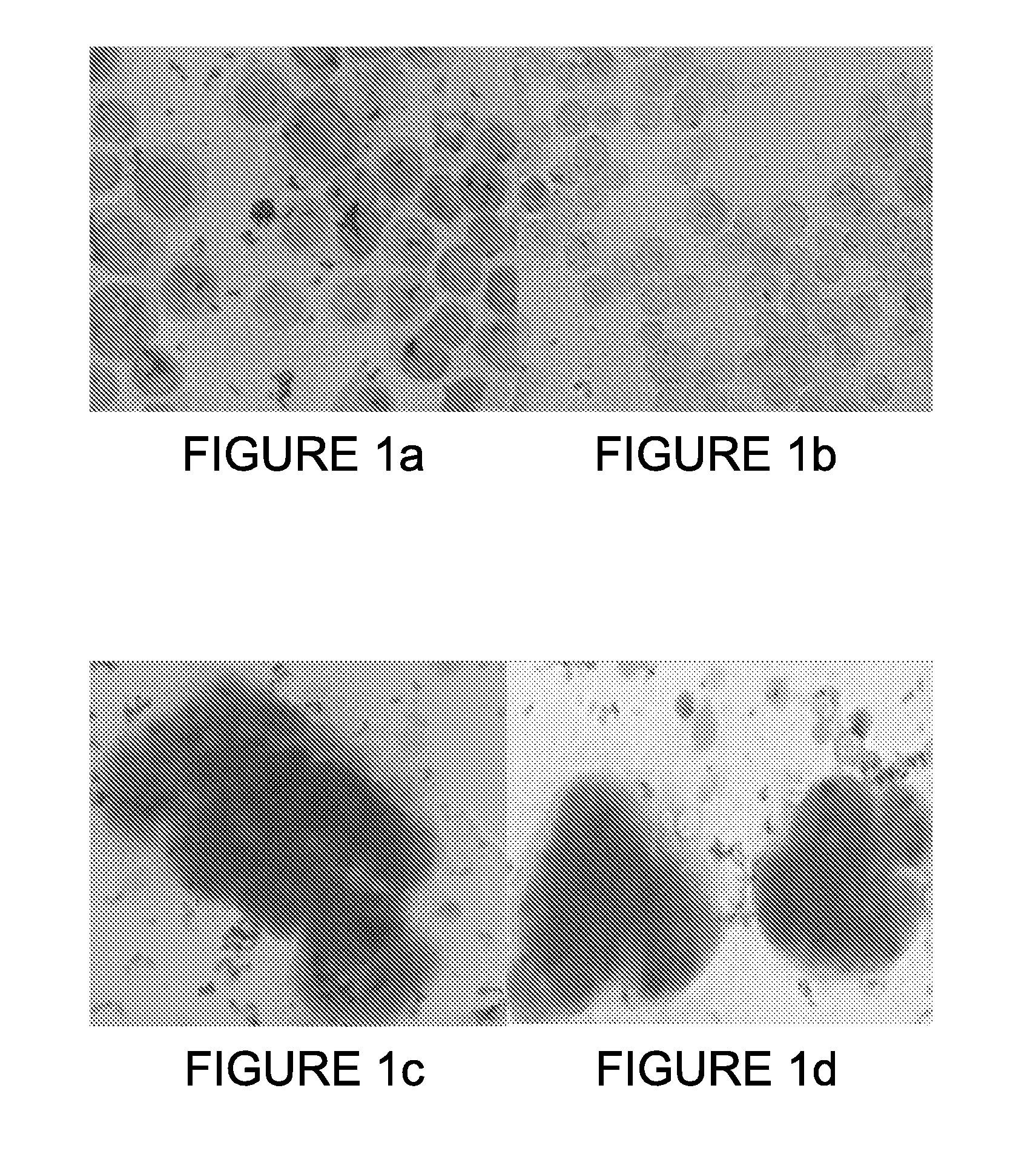Method of obtaining circulating cancer cell populations, associated cellular compositions and methods of using same
a cancer cell and circulating technology, applied in the field of circulating cancer cell populations, can solve the problems of low detection sensitivity, difficult to characterize them using standard blood test procedures, inability to fully isolate and molecularly characterize viable ctcs, etc., to achieve the effect of preventing, treating and/or alleviating the symptoms of cancer, and lacking usefulness
- Summary
- Abstract
- Description
- Claims
- Application Information
AI Technical Summary
Benefits of technology
Problems solved by technology
Method used
Image
Examples
example i
CCC-Enrichment from Apheresis Product
[0121]Screening.
[0122]Cancer patients were first screened using 10 mL of peripheral blood followed by a Ficoll™ gradient (according to the manufacturer's instructions) to collect peripheral blood mononuclear cells (PBMCs). The PBMCs were then enriched in CCCs using a negative selection (RoboSep™) with magnetic beads coated with anti-CD45 specific antibodies (StemCell Technologies, Vancouver, BC). The CD45-negative fraction obtained is referred herein as the peripheral blood (PB)-enriched CCCs. Cells were examined by immunohistochemistry following a Cytospin™ concentration and staining with cytokeratin using the Epimet™ detection kit (AS Diagnostic, Germany). Patients classified as CTC-positive (based on Epimet™-positive staining) were selected for the apheresis procedure.
[0123]Semi-Purified CTCs from Apheresis Product.
[0124]Apheresis is conducted on screened patients as well as on normal subjects to obtain apheresis product (APP). The configurati...
example ii
Cellular Population Characterization
[0137]Late stage breast cancer patients that were enrolled screening positively for Epimet™. Twenty-seven (27) patients underwent apheresis. The cytokeratin-positive CTCs (as identified using Epimet™) from the APP from these patients ranged from 9 000 to 110 000 CTCs / APP.
[0138]Some of the PB-enriched CCCs as well as some of the ANCP-enriched CTCs stained positive for Epimet™ (FIG. 1). The ANCP-enriched CCCs can be cultured as monolayers (using the stem cell media). Alternatively, the APP-enriched CTCs can be cultured or in non-adherent conditions in MammoCult™ media (FIGS. 2A and 2B) and can form mammospheres (FIG. 2C).
[0139]Preliminary characterization in mammosphere culture indicates that these cells stain positively for ALDH1, negatively for cytokeratin (CK8) and harbor the CD44(+), CD24(−) phenotype characteristic of CSCs (data not shown). Six (6) passages in mammocultures on a selected number of patients were successfully achieved without evi...
example iii
[0150]One or more frozen aliquot of RoboSep™ CD45-negative cell population (described in Example I and containing about 5×106 nucleated cells and about 1 000 to 3 000 CTCs based on Epimet™-positive staining) is cultured in the conditions described in Example II until approximately 600 000 cells are obtained (usually after 6 subculture steps). This amount of cells is sufficient for testing four distinct compounds in triplicate at four different concentrations using a plating density of approximately 5 000 to 10 000 cells / well in 96-well plates. Cells are plated onto ultra-low attachment microtiter plates at 5 000 to 10 000 cells / well in 125 μL of fresh MammoCult™ media in triplicates. Experimental and control samples (no cells added) are incubated for 24 hours at 37° C. and 5% CO2. The MammoCult™ media is then replaced by 125 μL of the test compounds is diluted in MammoCult™ media at final concentrations of 0.01, 0.1, 10 and 100 μM. Incubation is prolonged for a...
PUM
 Login to View More
Login to View More Abstract
Description
Claims
Application Information
 Login to View More
Login to View More - R&D
- Intellectual Property
- Life Sciences
- Materials
- Tech Scout
- Unparalleled Data Quality
- Higher Quality Content
- 60% Fewer Hallucinations
Browse by: Latest US Patents, China's latest patents, Technical Efficacy Thesaurus, Application Domain, Technology Topic, Popular Technical Reports.
© 2025 PatSnap. All rights reserved.Legal|Privacy policy|Modern Slavery Act Transparency Statement|Sitemap|About US| Contact US: help@patsnap.com



